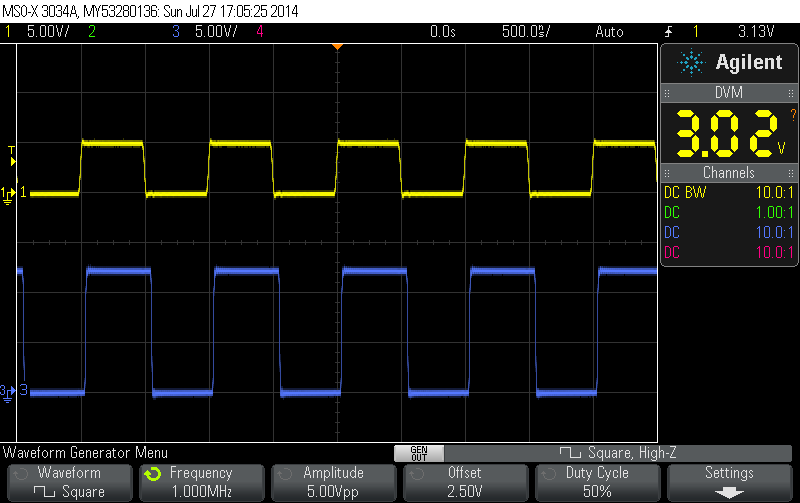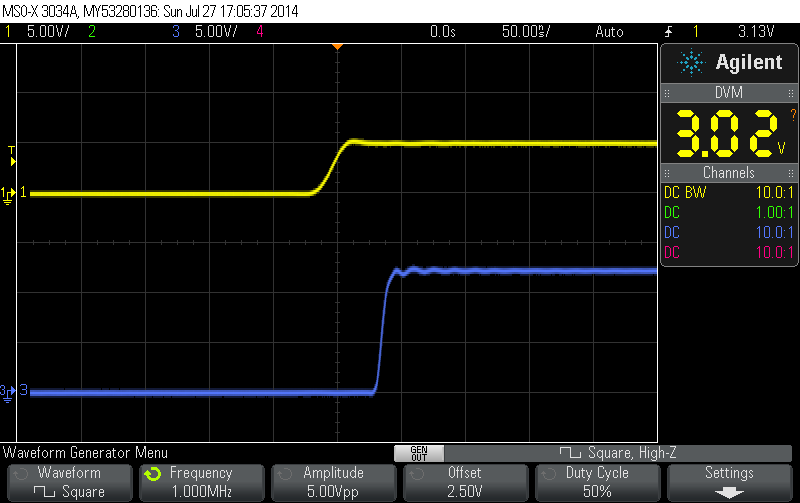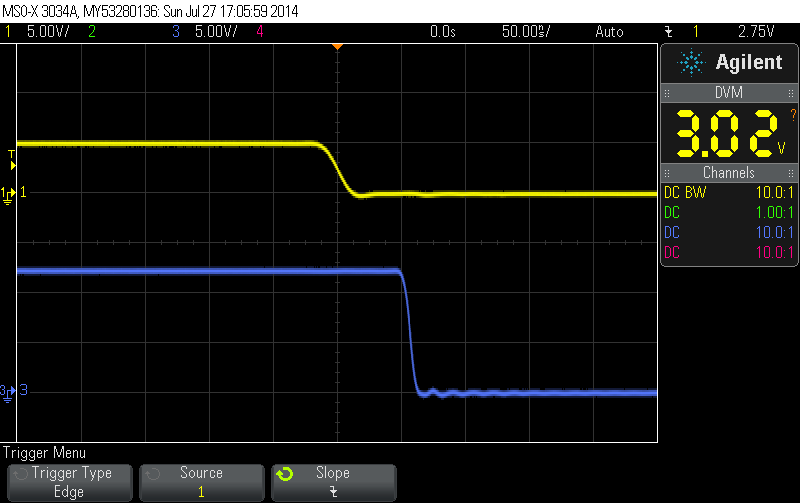I just finished the design and development of a new Level Shifter, LS2. Although similar in function to the LS1 the new level shifter complements the functions of the LS1.
The new Level Shifter is a true buffer, squaring up the input signal and driving the output signal high and low with active drivers. The LS1 is a bi-directional circuit and drives low but has resistors for pull-up. It is aimed at I2C circuits and low speed signals.
The LS2 outputs are low when the inputs are not driven. Each one of the 12 inputs has a 500k pull down resistor to ground to ensure that the input will stay low while the micro driving it is in reset. It works well with an Arduino to convert 5V or 3.3V signals to 12V.
The LS2 has two power supply pins, pin 1 and pin 28 and the buffers can translate from low to high levels or high to low levels. The input and output power supplies determine whether the level shifting is from high to low or vice versa. The input and output power supplies can be anywhere from 3.3 to 18V and the order in which the supplies are turned on is not important.
The LS2 has 12 channels with the inputs on the left and outputs on the right.
The scope shot below show the measured waveform when converting a 5V signal to 12V’.
The LS2 level shifter is quite fast and can easily translate a 1MHz signal.
Production quantities are available now and the price is $4.95 for a 12-channel module.




